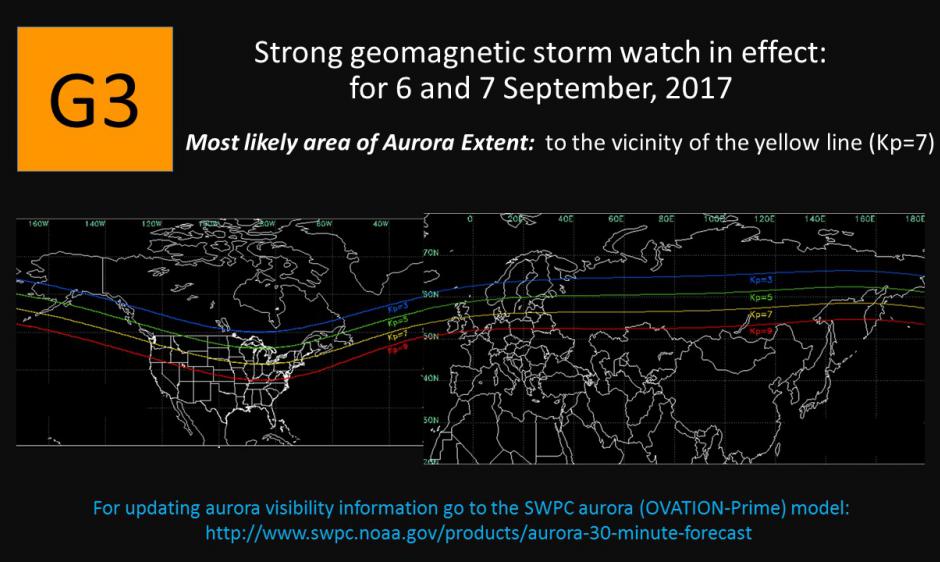Northern Lights in Ohio? Sun Storm May Ramp Up Auroras Tonight!
People as far south as Ohio and Indiana may be able to see the northern lights tonight (Sept. 6), thanks to a powerful sun storm.
On Monday (Sept. 4), the sun blasted out a huge cloud of superheated plasma known as a coronal mass ejection (CME). This fast-moving CME is expected to slam into Earth overnight Wednesday, triggering strong geomagnetic storms.
Such storms often supercharge Earth's auroras, the ghostly displays of dancing color also known as the northern and southern lights. And that could be the case Wednesday night through early Thursday morning (Sept. 7): Auroras are likely to extend southward into the continental United States, from Washington and Idaho in the West to Indiana and Ohio in the Midwest and New England in the Northeast, according to the National Oceanic and Atmospheric Administration’s Space Weather Prediction Center (SWPC). [Amazing Photos of the Northern Lights]

The moon also happens to be full Wednesday night, unfortunately, so its glare will dampen the light show to some degree.
You can track the northern lights and see if they're likely to reach your location, using SWPC's 30-minute aurora forecast tool here: http://www.swpc.noaa.gov/node/45
The northern and southern lights are generated by charged solar particles hitting molecules in Earth's atmosphere. The sky show is usually restricted to high latitudes, because our planet’s magnetic field tends to funnel these particles toward the poles.
CMEs are generally associated with solar flares — powerful outbursts of high-energy radiation. Monday’s CME fit this description, erupting along with an M5 flare from a sunspot known as AR 2673. (Scientists classify flares into one of three categories, depending on their strength: C-class flares are the weakest, M flares are medium-strength and X are the most powerful.)
Get the Space.com Newsletter
Breaking space news, the latest updates on rocket launches, skywatching events and more!
Editor's note: If you snap a photo of the northern lights, and you'd like to share it for a possible story or image gallery, please send images and comments to Space.com at: spacephotos@space.com.
Follow Mike Wall on Twitter @michaeldwall and Google+. Follow us @Spacedotcom, Facebook or Google+. Originally published on Space.com.
Join our Space Forums to keep talking space on the latest missions, night sky and more! And if you have a news tip, correction or comment, let us know at: community@space.com.

Michael Wall is a Senior Space Writer with Space.com and joined the team in 2010. He primarily covers exoplanets, spaceflight and military space, but has been known to dabble in the space art beat. His book about the search for alien life, "Out There," was published on Nov. 13, 2018. Before becoming a science writer, Michael worked as a herpetologist and wildlife biologist. He has a Ph.D. in evolutionary biology from the University of Sydney, Australia, a bachelor's degree from the University of Arizona, and a graduate certificate in science writing from the University of California, Santa Cruz. To find out what his latest project is, you can follow Michael on Twitter.









